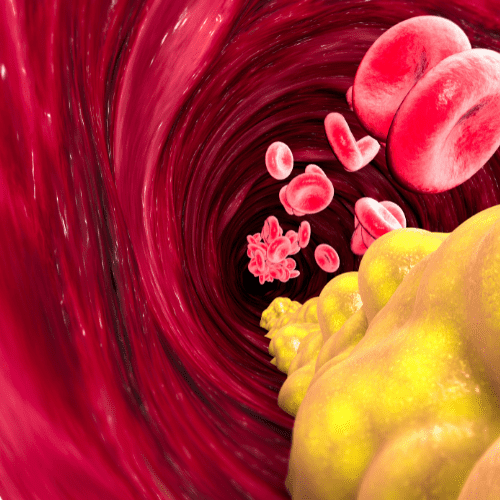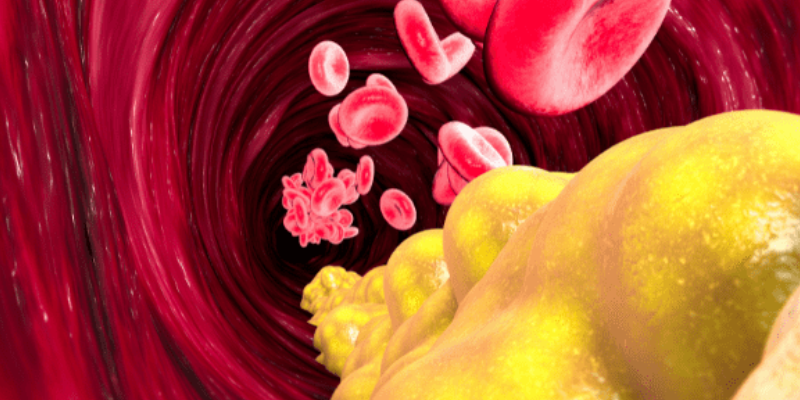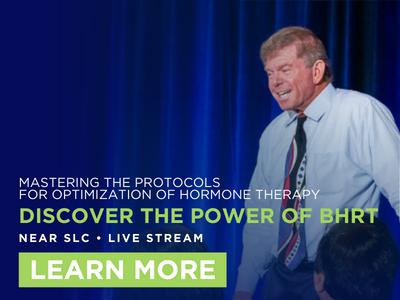
CVD: Could all the Medicines that we Prescribe, Including Statins, be Increasing the Risk of Cancer?

CVD is the # 1 killer in the U.S. and worldwide. The medical literature and pharmaceutical industry has led us to believe in the cholesterol-centric model in preventing CVD. Unfortunately, utilizing cholesterol-lowering medication has only led to a 1-3% absolute risk reduction (ARR) in CVD and mortality. Not very impressive for all the money and effort put forth in lowering cholesterol with medication. And if the cholesterol-centric model for CVD was 100% correct, then why don’t we witness a more definitive reduction in CVD morbidity and mortality? Is there something else that could be at the root of this disease that we are missing? Although statistics demonstrate a slight decrease in morbidity and mortality from CVD with lipid lowering therapy, data also demonstrate that there is a concomitant societal increase in cancer-related morbidity and mortality, as well as in increase in overall incidence of cancer. Treatment of active cancer has advanced remarkably however, the overall incidence of cancer in general has increased. Why? Observing an increase in cancer incidence, and an observed and unexpected lack of significant decrease in CVD with medications, could the underlying pathology for both of these illnesses be the same? And could treatment/prevention of this specific cause thereby reduce the incidence of both CVD and cancer? Just what is that piece of the puzzle that we’re missing and what is the evidence for this pathology and why do we ignore it? And could our aggressive treatment with cholesterol medication actually be increasing the incidence of cancer? Could the use of other medications also be fueling the fire? Well, that’s what the literature supports. “Yes, but the benefits outweigh the risks,” so they say. Or do they? What’s on the other side of the coin and just what is that risk? Could all the medicines that we prescribe, including statins, be increasing the risk of cancer? You would be amazed. This was the overall topic and theme of the Hormones and Beyond 2021 Symposium.
If you are interested in learning more about the value and efficacy of Bioidentical hormones in HRT as an alternative to medication-based therapies, please consider our four part hormone optimization workshop series.
Just What Is It That We Can Do To Prevent Cancer, And Cancer Recurrence?
The speakers of the 2021 Symposium focus was on cancer risks, the overall theory of cancer initiation, and the evidence for prevention. We are living at a time where the advancements in cancer treatment have resulted in a dramatic reduction in morbidity and mortality from cancer. Centrosome amplification, immunotherapies that attack specific cancers, immune-oncology, ultrasound-sensitive lipid carriers that improve delivery of cancer-specific drugs, radiopharmaceuticals with specifically targeted isotopes (theranostics), chimeric antigen receptor T (CAR T) cell therapies turning the patient’s own immune system against their cancer, MYC-blocking proteins that turn off cancer genes, all new technologies that will be a game-changers for cancer treatment. However, isn’t it a shame that we have to resort to these therapies as opposed to preventing the cancer in the first place? Wouldn’t that make more sense? So, just what is it that we can do to prevent cancer, and cancer recurrence, that is so prevalent in our society? The medical and scientific literature that I will review will hold the answers to the foregoing and that is the EBM theme of this year’s conference.
“A Correlate Does Not A Surrogate Make”
At the 2020 Hormones and Beyond I introduced the concept of “A correlate does not a surrogate make.” Translation: An elevated HgBA1C portends an increase in DM and CVD. However, lowering the HgBA1C does not necessarily correlate with less CVD or improved outcomes as I showed in the first newsletter as attachments. Chasing that surrogate marker HgBA1C does not result in less disease, and only outcome studies will demonstrate what does or does not. Articles that appeared in both the NEJM and JAMA proved that the tighter blood sugar control with diabetic medications, the worse the CVD outcomes, which is the opposite of what would intuitively have been predicted. Why? Jason Fung introduced the concept of increased levels of insulin drive glucose into the fat cell where it is stored as fat, particularly in visceral fat causing weight gain seen in most diabetics that take insulin or insulin secreting drugs. And that is what drives the increase in dyslipidemia, CVD, weight gain, NAFLD, and pancreatic insulin resistance, all simply by cramming more glucose into the cell to be stored as fat.
And that intracellular fat increases inflammation and organ dysfunction. But that’s what insulin does, it lowers serum glucose by storing it as fat inside fat cells, liver cells, kidney cells, and pancreatic fat cells (no metabolism of glucose = increased storage), as opposed to burning the glucose inside muscle cells (increases glucose metabolism and excretion). Our concepts on the cause of IR, and therefore the treatment of IR, need to change from the cause and the effect model to the other way around. IR is not the cause of, but is rather the result of something else, but that’s not what we were taught. What is that something else that we’re missing?
The Elephant In The Room – Glucose, IR, and DM
In a prior year I introduced the concept of insulin resistance being the result of hyperglycemia and not the cause of hyperglycemia, the opposite of that we have been misled to believe. Type 2 DM is not purely genetic for the most part. Rather, it is acquired from hyperalimentation of carbohydrates which is multifactorial. It is the hyperglycemia from over-nutrition (over-consumption) of carbohydrates that overwhelms the pancreatic production of insulin as the pancreas cannot keep up with the increased carbohydrate load. Hyperalimentation of carbohydrates increases blood sugar which is compensated for by increased pancreatic production of insulin. The increased production of insulin (to compensate for the increased serum glucose from hyperalimentation) results in storage of glucose inside the pancreatic cell as pancreatic fat, as well as in other organs and viscera. (This is the mechanism by which the body keeps control of serum blood sugar by storing it in fat cells as opposed to metabolizing it in muscle cells or excreting it). This increase in fat storage inside the beta-cell of the pancreas results in beta-cell dysfunction, or insulin resistance, or inability to keep up with the demand of hyperglycemia from dietary intake of carbohydrates. Thus, the beta-cell just wears out and can no longer control the blood sugar. Studies also prove that this increase in fat storage inside the liver and pancreas also increases inflammation and inflammatory cytokines (IL-1B) which further suppress beta-cell function causing loss of insulin production and more hyperglycemia. This results in a viscous cycle where the body’s compensatory mechanism to keep blood sugar under control is overwhelmed, and then more insulin is produced, which stores more glucose in organs as fat, which impairs pancreatic and liver function (IR and NAFLD). The increase in insulin drives more glucose into cells to be stored as fat in the viscera and organs as that is how the body rids itself of high glucose levels. The ensuing beta-cell dysfunction further drives up blood sugar when the pancreas cannot keep up with the demand for rising blood glucose levels thereby resulting in Type 2 DM and its resulting complications. The elephant in the room is glucose and the outcomes rest on how we dispose of the elephant, either by storage as fat in the peritoneum and organs, or by metabolizing it in muscle. We have to get rid of the elephant. Why can’t we see that? Is it just me that sees the elephant?
The mechanism of atherosclerosis has always been cholesterol-centric. However, most patients that have CVD have normal baseline cholesterol levels thereby leading us to seek out an alternative explanation for the disease. According to recent lipidology literature, measuring LDL cholesterol is out of vogue. We’ll review the most recent literature demonstrating that the LDL particle number, or apo-lipoprotein B molecule, is a much more predictive marker for CVD than LDL. More importantly, lowering LDL cholesterol with statins does not lower the apo-B molecule that much which probably accounts for the underwhelming benefit of statins in reducing CVD as much as we would like. More so, atherosclerosis is due to the formation and inflammation of the macrophage foam cell that is responsible for plaque deposition and that can be affected by many other factors other than LDL cholesterol. Like what? Fat! (See above paragraph). Other factors are involved in inflammation of the foam cell, primarily the inflammatory cytokines that are found inside the fat cells. It comes as no surprise that dyslipidemia, high triglycerides and low HDL, result in a profound effect on apo-B levels that are not improved with cholesterol-lowering medication. Hyperglycemia, IR, and DM, all increase triglycerides and suppress HDL. The way to lower triglycerides and raise HDL is to reduce the visceral fat via lowering the serum glucose. Statins do not lower serum glucose, or visceral fat. In fact, statins are notorious for raising blood sugar, IR, DM, triglycerides, and CAC. Statins will not get rid of the elephant. Estradiol, testosterone, and T3 all lower visceral fat, lower inflammation, lower blood sugar, lower apo-B, and all will get rid of the elephant in the room that no one can see. At least that is what the EBM literature shows. Why do we ignore that literature, and why can’t we see the elephant in the room?
It comes as no surprise that statins increase the risk of type 2 DM resulting in an increase in blood sugar and storage of glucose inside the cell as fat. However, the incidence of statin-induced DM is only 20-40%. Before DM is even diagnosed by an elevated HgBA1C, the insulin resistance and dyslipidemia predominate even when blood sugars remain normal. The cause of this is multifactorial and may be responsible for than the less than robust effect of statins in reducing CVD risk. Statins reduce the risk of CVD by their pleiotropic effects but at the risk of causing deposition of fat and glucose inside the cell. (Definition of pleiotropic: Pleiotropic effects of a drug are actions other than those for which the agent was specifically developed. These effects may be related or unrelated to the primary mechanism of action of the drug, and they are usually unanticipated). Statins have not been shown to decrease plaque (except with endovascular imaging), and they increase coronary artery calcification, blood sugar, triglycerides, visceral fat, and BMI. Hormones have been proven to decrease atherosclerosis plaque, decrease coronary calcification, and decrease blood sugar and DM. “Yes, but the benefits of statins outweigh the risks!” Or do they? But what about the increased risk of elevated BS, IR, and DM along with the concomitant increased risk of cancer? Studies prove a 50% reduction in serum testosterone levels in men that take statins. Shouldn’t we be using testosterone along with statins to prevent the side effects/risks of statins? What about E2, T3, and DHEA? Are you aware that metformin also reduces total testosterone by 50%? And how many people are taking metformin for hyperglycemia and diabetes? “What elephant, I don’t see any elephant!”
By now I hope that you grasp the concept that I introduced in the last BH Newsletter. The mechanism for CVD as well as cancer may very well be the same. It is the elephant in the room, the one that no one seems to see, or wants to fix. It’s the glucose, IR, and DM. At the 2021 Symposium we looked at how to get rid of the elephant and protect against CVD and cancer. Attendees learned how we maintain the pleotropic benefits of statins, and not cause harm and complications of lowering the LDL and the resultant diabetes, harms, and complications.
Stay well, Neal
If you are interested in learning more about the value and efficacy of BHRT as an alternative to medication-based therapies, please consider our four part Hormone Optimization Workshop Series, and start training with us at Part I: Discover the Power of BHRT.
